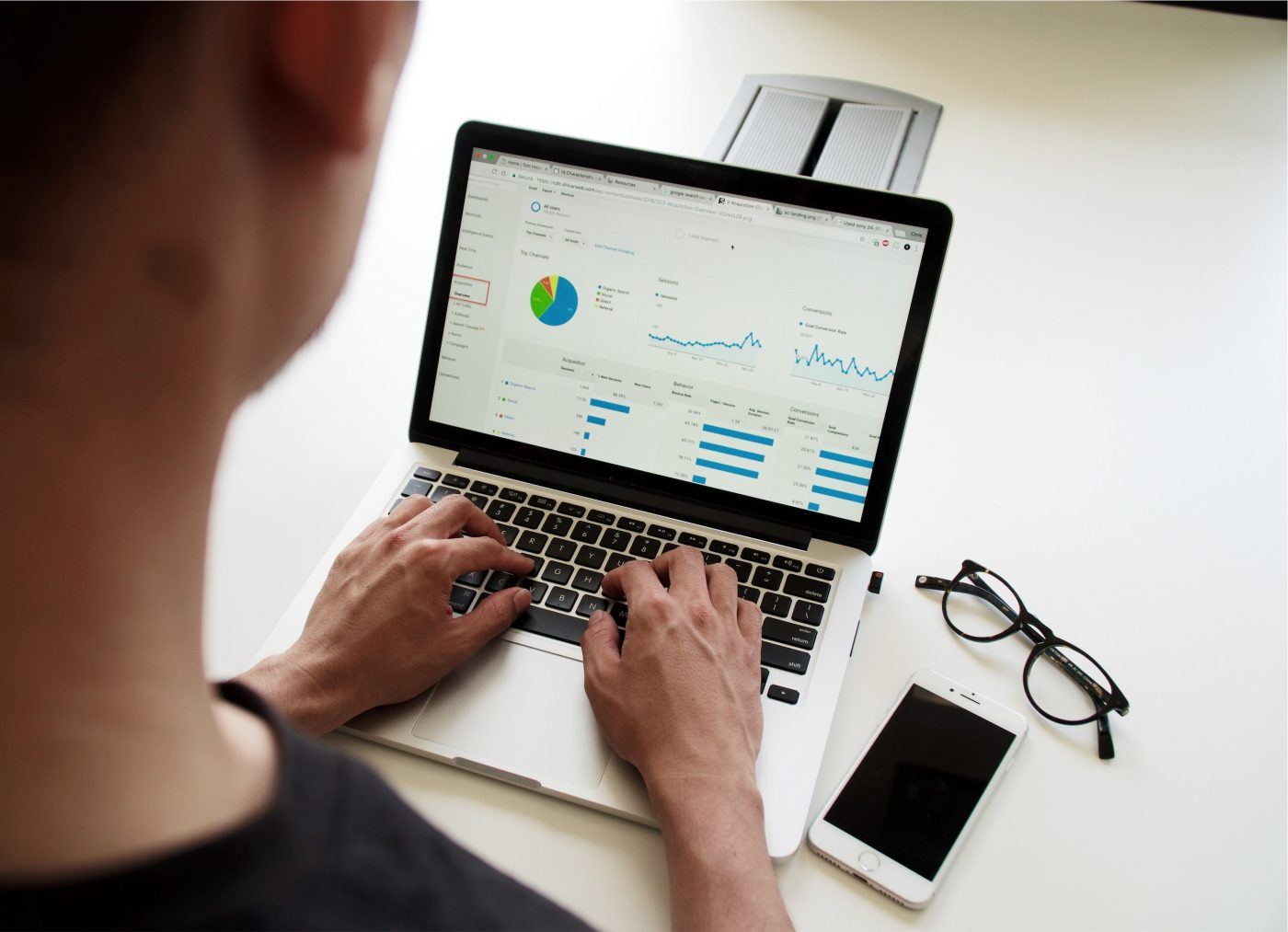Google Analytics is full of specific terms which don’t mean a lot to most people. Bounce Rate can be one of those which is trickier to understand properly – particularly when you don’t focus primarily on SEO or digital marketing. This post will go through what bounce rate is, why it is important, how the data can be utilized and some common errors which can be made around it.
What is Bounce Rate?
Bounce rate is a metric in Google Analytics which shows the percentage of users who “bounced” straight off your site – in other words – they didn’t interact with it.
A bounce is when a user instigates a session on your site has no further interactions and then leaves, resulting in just one request on the Google Analytics server. This is then calculated as a percentage of all sessions across the site. For example, if 60 user sessions have 1 view each and the other 40 have multiple pageviews and interactions, then bounce rate will be 60%.
This is under normal circumstances. There are occasions where this isn’t true, but these are fairly rare, so we’ll mention some examples in the last section.
What is a Normal Bounce Rate?
A normal bounce rate is probably around 40 – 60%. This depends on a range of factors and can even vary massively within the same industry, so it might not be a cause for concern if your website falls outside of this range.
The page type also has a large effect on bounce rate too, with blog posts such as this generally having a higher bounce rate due to them being self-contained and having a complete set of information. Of course, if you write a particularly intriguing article which gets people clicking around your website, this will lower the bounce rate!
Product and category pages on ecommerce sites tend to have a low bounce rate. This is because people are browsing, finding out information and generally looking at various pages on your site. Also, if these pages are successful, your users will visit basket & checkout pages, so this will keep the bounce rate low.
Why is Bounce Rate Important?
As a top-level figure, bounce rate can be used to gauge how many users actually interacted with your site. If you have 40,000 users per month and a 60% bounce rate, you should really be judging you site performance on the 24,000 that actually interacted.
Obviously you want to get the 16,000 who bounced to stick around, and analysing your bounce rate across different pages and sections can help you locate issues and user experience problems. It’s good to look at your website data in blocks for bounce rate, so you can see generally trends and then drill down into high bounce rate sections to identify why users are leaving. If you have a hierarchical URL structure this can be simple to audit in Google Analytics.
Knowing other website data from within your sector and from websites which are similar in size and design is good too. Comparing bounce rates of a traditional ecommerce site against one with a non-traditional design can affect the bounce rates, so think more about how the user experience compares rather than the industry.
It is worth keeping in mind that when you are looking at pages with 100% bounce rate, you will want to look at the average time on page, not the session duration. This is because with a 100% bounce rate page the session will be zero as there were no further interactions to extend the session beyond the initial page hit. The average time on page shows how long users spent on the page though, so in the case of a blog post being read, the bounce rate may be 100%, but the time on page could be how long it takes to read the blog. This will result in a 100% bounce rate session, but it should really be classed as a successful visit on your site.
A good place to analyse bounce rates more thoroughly is within Top Landing Pages report under Content in Google Analytics. This shows you how many entrances, the number of bounces and the bounce rate as a percentage.
How to use Bounce Rate Data
Once you’ve identified the high bounce rate pages or sections, you can delve deeper into why the bounce rate is high there. Here are a few examples of how understanding a high bounce rate can help your website:
Improve content on pages with a high bounce rate
Do you have a lack of engaging content on the high bounce rate pages? If so, think about rewriting content or including images and videos. A common issue with content pages is lack of relevancy high up the page, making impatient users leave quickly.
Identify the need for redesign
This is particularly useful when using tracking on other interactions on the site. You can record clicks on menus, filters, scrolling, etc. Just be careful with these types of events, as they count as interactions, which can stop a page view being a bounce. View the common errors section for help with stopping this.
See what page types are popular
As previously mentioned, you can view your site in blocks by URL or by setting up different filters/segments. This can help you look at all the blog pages, category pages, etc. You can then see quickly where the drop off is on the site.
Locate high bounce channels and adjust tactics
If you are driving traffic from paid advertising to certain pages or sections but they also have a high bounce rate, this may be worth re-assessing. This can be seen by low conversion values in Google Ads and other paid sources but identifying it in Google Analytics may be easier.
Compare keywords against page content
Check your keyword rankings from Analytics, Search Console and third-party tools. Your high bounce rate pages may be ranking for irrelevant terms or have a different intent to the page design. Information pages can get ranked for sales terms and vice-versa, giving a bad user experience and a high bounce rate. Search engines are improving on this, but there are still issues.
Common Errors & Misconceptions
0% Bounce Rate
The most common thing we see if a low bounce rate of nearly zero. This is almost certainly a sign of duplicate tracking at some point, but there can be other reasons for this. Check your setup with Google’s Tag Assistant extension, but if it’s a bigger issue you can get in touch with us for help.
Event Tracking Errors
When you are tracking events on your site, these will by default count as interactions. This is generally fine – you want to count form submissions, navigation clicks, phone calls, etc. What about scroll depth? Video auto play? Navigation menu hovers without clicks?
You could be tracking these as events, but they should be tagged as “non-interaction hits”. Click here for further reading, but the main point is that these metrics which automatically happen shouldn’t count as interactions. If you an event firing to show a user viewed 25% of the page that’s good, but if there are no further interactions, you still want this to count as a bounce.
Check Google Search Console
If your bounce rate has gone up but you can’t see why, it could be wrongly coded links, malicious links or just broken pages. Check to see what error pages you have and make amends as required.
100% Bounce Isn’t Always Bad
As mentioned before, a bounced user isn’t always a bad user. If you click on a link, read the page and leave, you might go back later – maybe even weeks or months, or it might encourage you to visit the physical location. Look deeper into metrics and try and put reasoning behind the data. Figures are good for informed decisions, but they can’t take every variable into account!
As with many things in digital marketing, it’s easy to overlook the obvious issues if you don’t take a step back. Get in touch with us today for a fresh perspective and make sure you’re making the most of your site.







Leave a Reply